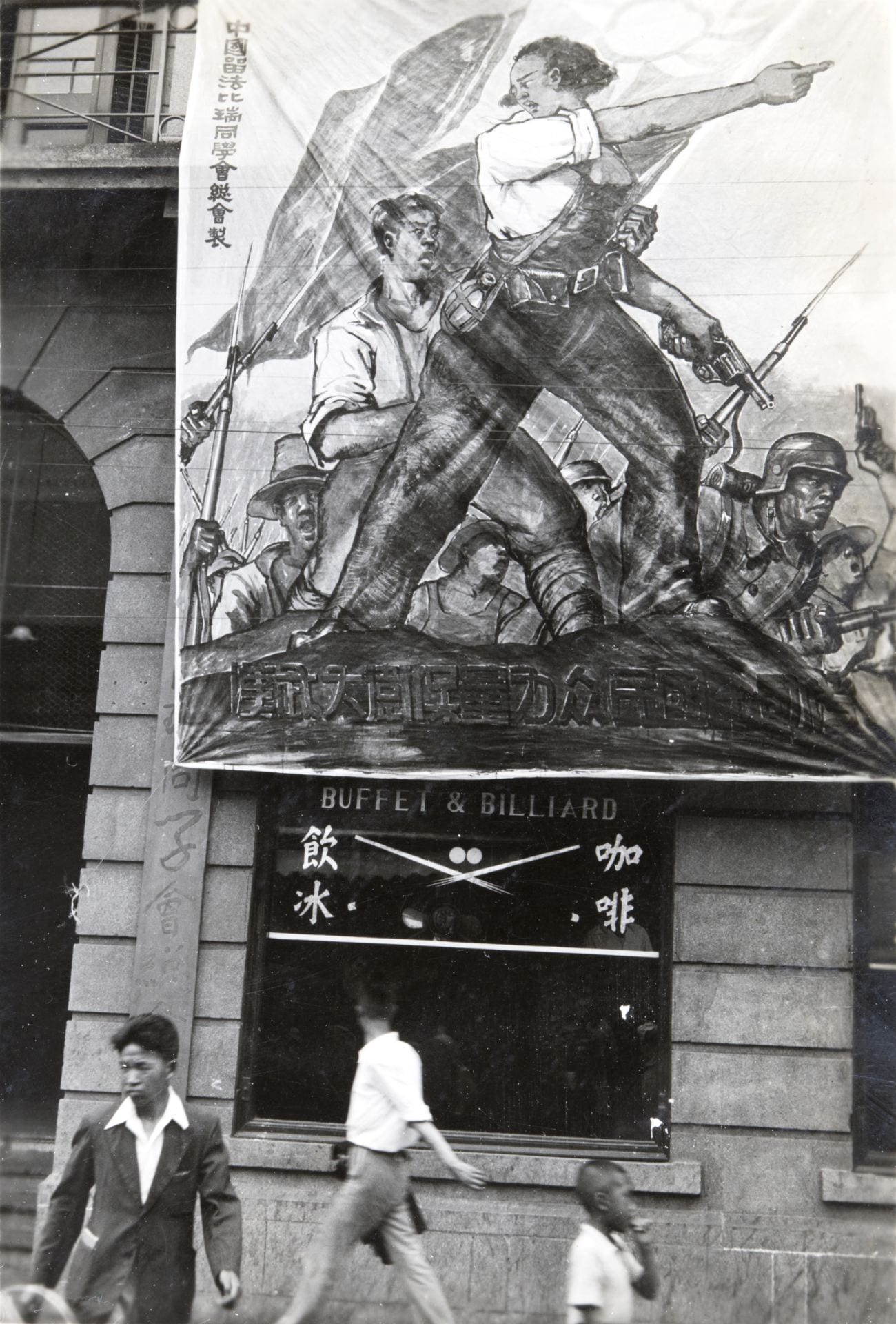Ooo, look: our eagle-eyed Project Manager Jamie Carstairs spotted this wonderful photograph taken in 1938 by Robert Capa in Hankou (Wuhan) and recently published in MAGNUM China (Colin Pantall and Zheng Ziyu, eds, Thames & Hudson, 2018):

Robert Capa, CHINA. Hankou. July-September, 1938. Men, seen through a window, walking through street after the air battle between Japanese and Chinese fighter planes. © Robert Capa © International Center of Photography/Magnum Photos
This is one of a number of striking photographs Capa took during his two stays in the then temporary capital of Nationalist China during the Japanese invasion. But why are we excited? Because of this photograph, which we scooped up from ebay last year. Robert Capa: we now know where you were.

Banner outside the headquarters of “L’Association des Etudiants Chinois de Retour de FBS”, 69 Jianghan Lu, Wuhan, 1938 (Bi-s162)
Whoever the photographer was, we can tell from this that Capa’s photograph was taken from within the headquarters of L’Association des Etudiants Chinois de Retour de FBS (‘France: Belgium: Switzerland Returned Students Association’). This was on Wuhan’s Jianghan Road, at no. 69 in fact (江漢路六十九號). This was a prominent long thoroughfare stretching from the Yangzi riverside, and remains today a major pedestrianised shopping street in the city centre.
Wuhan fell to the Japanese in October 1938. The Nationalist capital was re-established at Chongqing, yet further along the Yangzi river. Capa had long since left. The Association will have relocated too. The fate of the men he caught on film as they walked along the street on this sunny day in 1938 was probably bound up with the terrible course of the capture of the city and its brittle history during the occupation.
